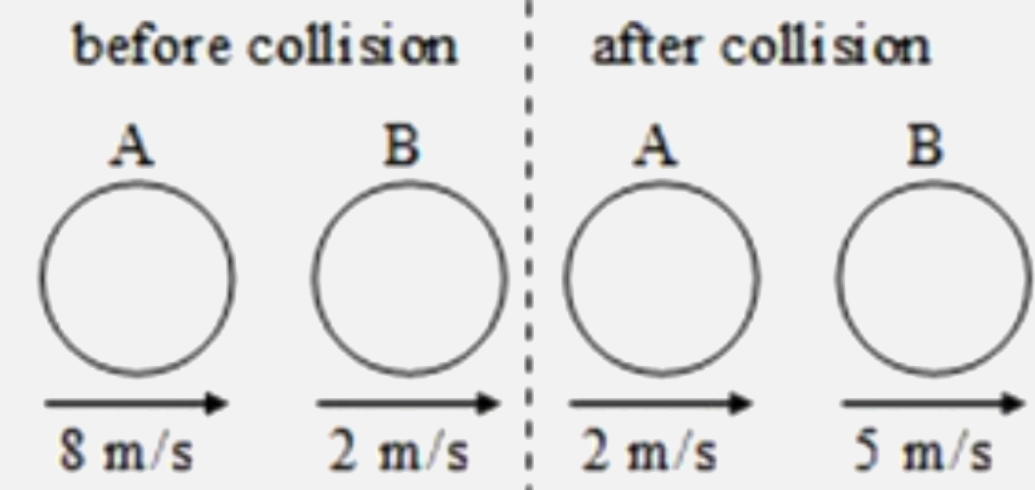The two diagrams show the situation before and after a collision between two spheres A and B of equal radii moving along the same straight line on a smooth horizontal surface. The coefficient of restitution e is

The correct Answer is:B
Step by step video & image solution for The two diagrams show the situation before and after a collision between two spheres A and B of equal radii moving along the same straight line on a smooth horizontal surface. The coefficient of restitution e is by Physics experts to help you in doubts & scoring excellent marks in Class 12 exams.
Updated on:21/07/2023Topper's Solved these Questions
Similar Questions
The two diagrams show the situations befoer and after a collision between two spheres A and B of equal radii moving along the same straight line on a smooth horizontal surface. The coefficient of restitution e is lt brgt

View SolutionA ball is projected from a point in a horizontal plane so as to strike a vertical wall at right angle A.after rebounding from the wall it strikes the horizontal plane once and returns to the point of projection just before second collision at horizontal surface. Find co-efficient of restitution for the two collisions, assuming it to be same for both the collision.
View Solution
Knowledge Check
In head - on collision between two particles A and B of same mass , A is moving with momentum 15kgm/s , B is stationary . During the impact , B gives impulse 10N−s to A . The coefficient of restitution is
A12B13C14D15In an elastic collision between spheres A and B of equal mass but unequal radii, A moves along the x-axis and B is stationary before impact. Which of the following is possible after impact ?
AA comes to restBThe velocity of B relative to A remains the same in magnitude but reverses in directionCA and B move with equal speeds, making an angle of 45∘ each will the x-axisDA and B moves with unequal speeds, making angles of 30∘ and 60∘ with the x-axis respectively.In an elastic collision between spheres A and B of equal mass but unequal radii, A moves along the x-axis and B is stationary before impact. Which of the following is possible after impact ?
AA comes to restBThe velocity of B relative to A remains the same in magnitude but reverses in directionCA and B move with equal speeds, making an angle of 45∘ each with the x-axisDA and B move with unequal speeds, making angles of 30∘ and 60∘ with the x-axis respectively.
Two particles of equal mass are moving along the same straight line with the same speed in opposite direction. What is the speed of the centre of mass of the system ?
View SolutionA ball moving with speed v collides with a horizontal smooth surface at an angle θ with normal to surface as shown in figure. If coefficient of restitution of collision is e, then find v'

View SolutionThe velocity vector of a sphere after it hits a vertical wall which is pallel to ˆj is (−ˆi+3ˆj) on a smooth horizontal surface. The coefficient of restitution between ball and wall is (1/2). Final the velocity vector of sphere immediately before collision.
View SolutionIn a collision between two solid spheres, velocity of separation along the line of impact (assume no external forces act on the system of two spheres during impact) :
View SolutionTwo particles are moving along a straight line as shown. The velocity of approach between A and B is

View Solution
